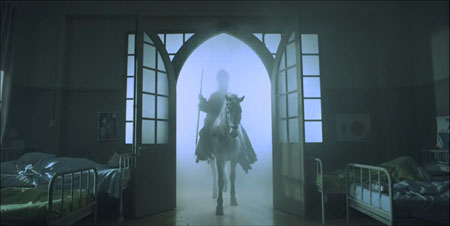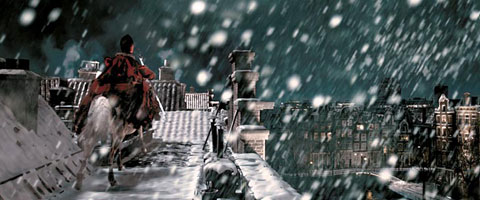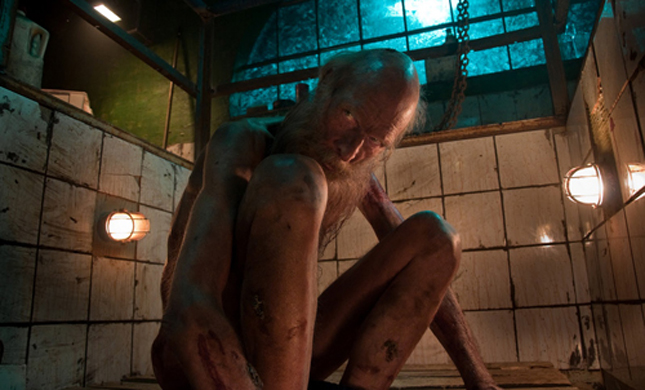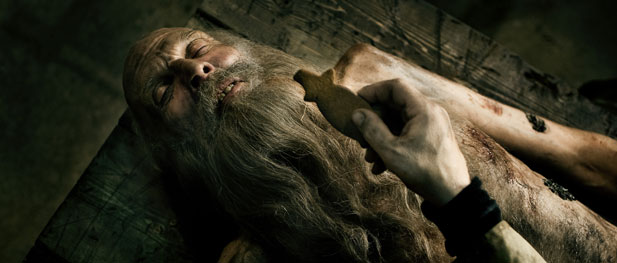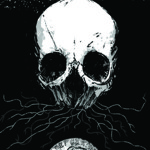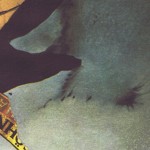CHRISTMAS IN JULY
CHRISTMAS IN JULY: Dick Maas’ SAINT and Jalmari Helander’s RARE EXPORTS join a long line of sadistic Santas
Kier-La Janisse
—————-
We love to beat up our cultural institutions in cinema, and Christmas – probably the most dreaded, inflated, enslaving holiday on earth (whether you subscribe to its foundational mythology or not) – is regular fodder for genre films. Staples like Don’t Open Til Christmas (1984), Silent Night Deadly Night (1984), Black Christmas (1974), Christmas Evil (1980) and the “And All Through the House” segment of The Tales From the Crypt movie (1972) are accompanied by no-budgeters like Santa’s Slay (2005) and Santa Claws (1996)…and that’s not even counting non-Santa Xmas horror like Jack Frost (1997), Gingerdead Man (2005), Black XXX-Mas (1999) and Treevenge (2008)! Genre films just love to pervert the things that are meant to make us soft viagra tabs feel safe, and Dutch filmmaker Dick Maas has specialized in doing just that for a while.
Maas, whose apparent fear of elevators resulted in two films about these killer contraptions (The Lift, 1983 and Down, 2001) as well as one of the most immortal taglines of the video-trash era: “Take the stairs, take the stairs – FOR GOD’S SAKE, TAKE THE STAIRS!” returns to the genre that loves him with 2010’s Saint (or Sint, as it is originally known), a horrific riff on the St. Nicholas Festival on December 5th low cost levitra that dominates the Dutch holiday season. Where we know St. Nick as a “jolly old soul” who, at worst, stuffs rocks in your stocking if you’re bad all year, the Dutch St. Nicholas is a little more formidable in his punishments: naughty children may find themselves packed up in a sack and shipped off to Spain (where there is a buzzing market for Dutch delinquents?). In Saint, the folkloric St. Nick is exaggerated to horrific proportions: he is presented as an excommunicated bishop who roamed the middle ages with a gang of plunderers who would rape, rob and murder without discrimination. When he is torched by the angry citizens of Amsterdam he vows that he will get revenge by returning to kill their children whenever a full moon falls on December 5th. And thus begins levitra 20mg side effects our story.
Dick Maas is one of the only Dutch filmmakers to have any international success aside from countryman Paul Verhoeven (although The Human Centipede has certainly gained a foothold for director Tom Six), and Saint reminds us why. Saint has a tried and true horror film structure – a suspected juvenile delinquent teams up with a suspected paranoid schizophrenic to try to stop a supernatural threat that everyone else in the town is oblivious to until it’s too late – but is heavily imbued with regional culture that makes it fascinating to the North American viewer. Who knew that Santa has a slave named Black Peter, and that to this day Dutch celebrants don blackface for historical re-enactments? (This racially insensitive aspect of the Dutch holiday festivities has come under attack in recent years, to no practical effect) But apparently the Church was not too thrilled with Maas’ perversion of their Christmas myth and the release of Saint in the Netherlands – on December 5th no less – prompted protests from religious groups that, of course, ended up helping the film’s publicity campaign significantly. The film also marks the reunion of Maas with Dutch actor Huub Stapel, who North American fans will remember as the lead from both The Lift and Amsterdamned (1988) – and perhaps even from the disturbing video Maas directed for Golden Earring’s “When the Lady Smiles”, in which Stapel humorously reprises his role from The Lift!
By odd coincidence, Finnish filmmaker Jalmari Helander conceived of an equally punitive Santa myth for his own Rare Exports (2010), showing that Santa is indeed not too popular in the North country these days. Rare Exports exploits similar myths of Santa as a historically malignant character that has somehow been bastardized into an emblem of ‘giving’ to coincide with the commercial needs of the holiday. Pietari is a young boy who lives on the edge of the woods in rural Finland – his small house is so isolated he’s barely allowed to be outside on his own even in broad daylight lest he be snatched away by the fierce wolves that roam the countryside. When exploring off-limits areas of the woods with his mullet-haired pal, Pietari discovers that the so-called “seismic investigators” who have blocked off the nearby mountain for geographical research are in fact corporate opportunists aimed at finding the place where Santa was buried centuries ago by the villagers. He scares the shit out of himself reading stories of Santa’s dastardly deeds, folktales that depict Santa as a demon who burns children alive in his cauldron and eats them. So when it looks like an impending holiday apocalypse is upon them, it’s up to Pietari to don his most protective hockey gear, strap on a rifle and protect the village from Santa’s wrath. Soon enough the adults are forced to see things his way and they form a plan to stun Santa and friends into submission (as in Saint, Santa has some gnarly friends).
But the moral alignment of Rare Exports is less obvious than one might think. Heroic antics are often marred by financial motives, which leads to some questionable social behaviour. One thing’s for certain: no one in this film is getting any Christmas presents anytime soon.
Collectively these films point a finger at the corrupting commercial nature of modern Christmas, while both benefiting from the easily marketable aspects of a universal holiday as a means of selling these ideas. It’s one of the ironies that makes horror such fertile terrain for social criticism – it’s a genre that takes pleasure in the very things it questions and attacks, creating a place where both are okay. But in order for the films to work they have to be entertaining, and Saint and Rare Exports are both such unmitigated fun that they will surely top the catalogue of holiday horror for years to come.
———————————-
RARE EXPORTS has its Montreal Premiere July 23 at 7:25pm in the Hall Theatre and screens again on July 26 at 3pm in the Salle JA DeSeve. More info on the film page HERE.
SAINT has its Canadian Premiere on July 23 at 9:25pm in the Hall Theatre, and screens again on July 28 at 12:45pm in the Salle JA DeSeve. More info on the film page HERE.
———————————

 July 23, 2011
July 23, 2011  No Comments
No Comments
